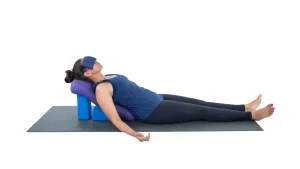
Modern healthcare fitouts processes can include all aspects of design, planning, and construction when setting up new healthcare facilities. It ranges from the physical design and furniture to medical equipment and technology infrastructure. Regarding healthcare settings, fit-outs are essential for ensuring functionality and efficiency in space while allowing routines or business activities to run smoothly and collaboration between multiple departments, which resultantly helps in efficient patient care and optimised use of the area.
Future-ready spaces can evidence opportunities that welcome integrated intelligent medical devices such as imaging equipment (MRIs, CT) through an informatics ecosystem to seamlessly connect digital patient records on a nationwide scale while incorporating sustainability practices capturing the use of eco-friendly products or green design strategies into mid-century renovation plans with energy-efficient systems reducing CO2 emissions. In turn, facilities achieve faster ROI and can also invest in the scalability of their systems to increase services or upgrade infrastructure with minimal ditch disruptions.
The Benefits of Healthcare Fitouts
Improved functionality and performance are two of the key benefits that come to mind when thinking of healthcare fitouts. A strategic fit-out design minimises bottlenecks and allows healthcare staff to provide care more efficiently. Optimal space utilisation helps better organise medical devices and patient areas, supporting improved care delivery with faster transactions. Design elements such as clear signage and intuitive layouts improve patient flows and reduce waiting times. Facilities can adjust their space arrangement over time in response to market conditions, the expansion of caseloads resulting from new technologies or higher patient traffic thanks to flexible layouts and adaptable infrastructure.
Advantages of Healthcare FitOuts
Well-planned healthcare fitouts offer a variety of benefits regarding sustainability and cost savings. They lower the facility’s environmental footprint and operational costs through eco-friendly materials and energy-efficient systems. Selecting hardy materials as fit out components prolongs their lifespan and decreases maintenance requirements, so they help with long-term upkeep costs. Designing areas to allow for cleaning and maintenance between operations also facilitates hygiene.
Another critical role of healthcare fitouts is to ensure the comfort and well-being of patients and staff. It adds to the patient experience by offering a relaxing environment with comfortable waiting areas, warm decor, and privacy features. Good-quality working conditions—ergonomic workspaces, pleasant break areas, and a good atmosphere at the office—will result in better staff happiness levels and job productivity.
Dental Fitouts in Australia
Facilities in dental clinics are uniquely designed with specific equipment requirements, setting them apart from other healthcare facilities. Dental chairs, diagnostic equipment, sterilisation areas, and patient comfort must all be factored into the design of dental fitouts Australia. Dentists and hygienists require ergonomic workstations, which include proper adjustable seating for spine health as well as lighting for optimal anatomical and visual optimality. Preventative measures are essential, with everything spiralling down to having washable surfaces and not creating the natural environment for viruses. The bridge is also designed with patient comfort in mind, minimising anxiety and maximising pleasant experiences from the design process.
Some of the latest trends and innovations in Australian dental fit outs include integrating innovative technology, such as digital workflow solutions or automatic sterilisation systems. Energy-efficient appliances and environmentally friendly materials are widely used these days, making sustainability a major trend. Spa-like environments and interactive technology to improve patient experience are also trends in their own right. Further, flexible, modular designs facilitate easy reconfiguration of spaces and allow for adaptable use. Preventive checks and advanced safety measures, such as improved air filtration systems and touchless technology, enhance infection control.
Planning and Implementation
There are some essential things you should consider while carrying out healthcare fitouts. As illustrated, space planning should be done to maximise efficiency and flow while providing adequate room for all workstations, equipment, and patient areas. It should ensure that health and safety regulations are adhered to, as well as building regulations and industry standards. They should budget for the whole project life cycle and keep funds for contingency costs. Cost-benefit analysis can be employed to assess the financial impact of design alternatives and materials. Realistic timelines, project milestones, and effective project management for timely completion and adherence to the plan.
Another critical component of the transformation is technology integration—planning for both today’s and tomorrow’s technologies to optimise IT infrastructure that can support medical and surgical systems. A comfortable and accessible design should improve the patient and staff experience, balancing workflow efficiency, comfort, and well-being.
Whenever you hire experienced fit-out experts who comply with the industry’s standards, pay attention to getting better quality results. Clear communication and collaboration are essential throughout the project. There are initial consultations, conceptualisation, and proper project management steps for precise application. Once it is completed, quality control measures and ongoing support after completion will also make sure that the retail fitout expectations are met and remain functional.
Conclusion
Healthcare fitouts not only provide better functionality but also ensure compliance with standards and sustainability, as well as improved comfort for patients and staff. Future-proofing fit-outs equip facilities with the capabilities to handle growing demand and advanced technologies, maintaining a set of benefits in efficiency and operational performance. Exceptional care and services begin with a commitment to excellence in design and planning, providing the foundation for the long-term advancement of healthcare facilities. Key takeaways: Stakeholders are urged to invest in space planning and versatile fit-outs that future-proof their spaces.






